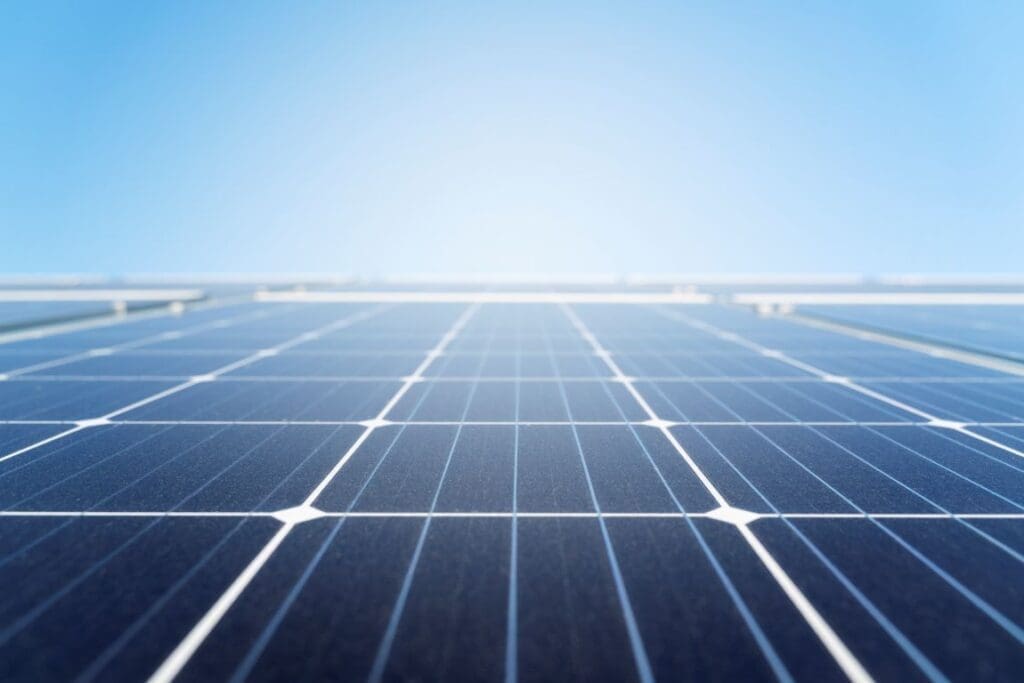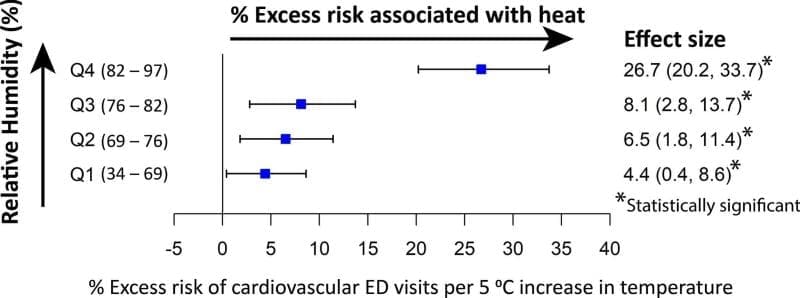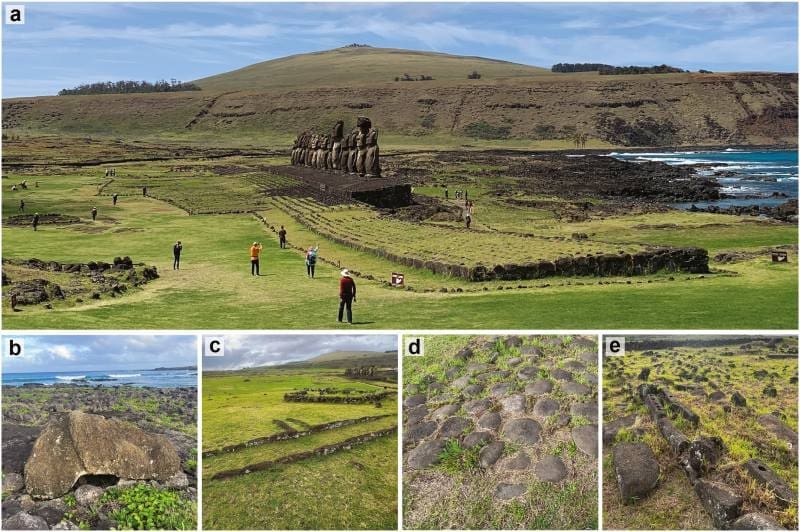Explore the latest insights from top science journals in the Muser Press daily roundup (August 13, 2025), featuring impactful research on climate change challenges.
In brief:
Surprisingly diverse innovations led to dramatically cheaper solar panels
The cost of solar panels has dropped by more than 99 percent since the 1970s, enabling widespread adoption of photovoltaic systems that convert sunlight into electricity.
A new MIT study drills down on specific innovations that enabled such dramatic cost reductions, revealing that technical advances across a web of diverse research efforts and industries played a pivotal role.
The findings could help renewable energy companies make more effective R&D investment decisions and aid policymakers in identifying areas to prioritize to spur growth in manufacturing and deployment.
The researchers’ modeling approach shows that key innovations often originated outside the solar sector, including advances in semiconductor fabrication, metallurgy, glass manufacturing, oil and gas drilling, construction processes, and even legal domains.
“Our results show just how intricate the process of cost improvement is, and how much scientific and engineering advances, often at a very basic level, are at the heart of these cost reductions. A lot of knowledge was drawn from different domains and industries, and this network of knowledge is what makes these technologies improve,” says study senior author Jessika Trancik, a professor in MIT’s Institute for Data, Systems, and Society.
Trancik is joined on the paper by co-lead authors Goksin Kavlak, a former IDSS graduate student and postdoc who is now a senior energy associate at the Brattle Group; Magdalena Klemun, a former IDSS graduate student and postdoc who is now an assistant professor at Johns Hopkins University; former MIT postdoc Ajinkya Kamat; as well as Brittany Smith and Robert Margolis of the National Renewable Energy Laboratory.
The research was published in PLOS One.

Identifying innovations
This work builds on mathematical models that the researchers previously developed that tease out the effects of engineering technologies on the cost of photovoltaic (PV) modules and systems.
In this study, the researchers aimed to dig even deeper into the scientific advances that drove those cost declines.
They combined their quantitative cost model with a detailed, qualitative analysis of innovations that affected the costs of PV system materials, manufacturing steps, and deployment processes.
“Our quantitative cost model guided the qualitative analysis, allowing us to look closely at innovations in areas that are hard to measure due to a lack of quantitative data,” Kavlak says.
Building on earlier work identifying key cost drivers – such as the number of solar cells per module, wiring efficiency, and silicon wafer area – the researchers conducted a structured scan of the literature for innovations likely to affect these drivers. Next, they grouped these innovations to identify patterns, revealing clusters that reduced costs by improving materials or prefabricating components to streamline manufacturing and installation. Finally, the team tracked industry origins and timing for each innovation, and consulted domain experts to zero in on the most significant innovations.
All told, they identified 81 unique innovations that affected PV system costs since 1970, from improvements in antireflective coated glass to the implementation of fully online permitting interfaces.
“With innovations, you can always go to a deeper level, down to things like raw materials processing techniques, so it was challenging to know when to stop. Having that quantitative model to ground our qualitative analysis really helped,” Trancik says.
They chose to separate PV module costs from so-called balance-of-system (BOS) costs, which cover things like mounting systems, inverters, and wiring.
PV modules, which are wired together to form solar panels, are mass-produced and can be exported, while many BOS components are designed, built, and sold at the local level.
“By examining innovations both at the BOS level and within the modules, we identify the different types of innovations that have emerged in these two parts of PV technology,” Kavlak says.
BOS costs depend more on soft technologies, nonphysical elements such as permitting procedures, which have contributed significantly less to PV’s past cost improvement compared to hardware innovations.
“Often, it comes down to delays. Time is money, and if you have delays on construction sites and unpredictable processes, that affects these balance-of-system costs,” Trancik says.
Innovations such as automated permitting software, which flags code-compliant systems for fast-track approval, show promise. Though not yet quantified in this study, the team’s framework could support future analysis of their economic impact and similar innovations that streamline deployment processes.
Interconnected industries
The researchers found that innovations from the semiconductor, electronics, metallurgy, and petroleum industries played a major role in reducing both PV and BOS costs, but BOS costs were also impacted by innovations in software engineering and electric utilities.
Noninnovation factors, like efficiency gains from bulk purchasing and the accumulation of knowledge in the solar power industry, also reduced some cost variables.
In addition, while most PV panel innovations originated in research organizations or industry, many BOS innovations were developed by city governments, U.S. states, or professional associations.
“I knew there was a lot going on with this technology, but the diversity of all these fields and how closely linked they are, and the fact that we can clearly see that network through this analysis, was interesting,” Trancik says.
“PV was very well-positioned to absorb innovations from other industries – thanks to the right timing, physical compatibility, and supportive policies to adapt innovations for PV applications,” Klemun adds.
The analysis also reveals the role greater computing power could play in reducing BOS costs through advances like automated engineering review systems and remote site assessment software.
“In terms of knowledge spillovers, what we’ve seen so far in PV may really just be the beginning,” Klemun says, pointing to the expanding role of robotics and AI-driven digital tools in driving future cost reductions and quality improvements.
In addition to their qualitative analysis, the researchers demonstrated how this methodology could be used to estimate the quantitative impact of a particular innovation if one has the numerical data to plug into the cost equation.
For instance, using information about material prices and manufacturing procedures, they estimate that wire sawing, a technique which was introduced in the 1980s, led to an overall PV system cost decrease of $5 per watt by reducing silicon losses and increasing throughput during fabrication.
“Through this retrospective analysis, you learn something valuable for future strategy because you can see what worked and what didn’t work, and the models can also be applied prospectively. It is also useful to know what adjacent sectors may help support improvement in a particular technology,” Trancik says.
Moving forward, the researchers plan to apply this methodology to a wide range of technologies, including other renewable energy systems. They also want to further study soft technology to identify innovations or processes that could accelerate cost reductions.
“Although the process of technological innovation may seem like a black box, we’ve shown that you can study it just like any other phenomena,” Trancik says.
Journal Reference:
Kavlak G, Klemun MM, Kamat AS, Smith BL, Margolis RM, Trancik JE, ‘Nature of innovations affecting photovoltaic system costs’, PLoS One 20 (8): e0320676 (2025). DOI: 10.1371/journal.pone.0320676
Article Source:
Press Release/Material by Adam Zewe | Massachusetts Institute of Technology (MIT)
Ocean architects at risk from impact of combined acidification and ocean warming
A research team from the Institut de Ciències del Mar (ICM-CSIC) has published a study in Communications Biology showing how ocean acidification and warming – two of the main consequences of global climate change – can simultaneously affect the structure, mineral composition, and microbiome of bryozoans, colonial invertebrates crucial for forming marine habitats. The findings point to potentially serious ecological consequences under a scenario of accelerated climate change.
The ‘false coral’, one of the most affected species
The study characterizes for the first time the microbiome of Myriapora truncata, a habitat-forming species known as ‘false coral’ and widely distributed throughout the Mediterranean. It also analyzes the response of this and another encrusting bryozoan species under future environmental conditions. False corals form three-dimensional structures that offer shelter to many species, as do other bryozoans that can even form reef-like systems – although corals usually receive more attention as primary marine habitat builders.

“Despite being a different phylum, very diverse and abundant globally, these small architects of the sea are often overlooked in studies on responses to environmental changes,” explains Blanca Figuerola, ICM-CSIC researcher and lead author of the study. She emphasizes that this work opens a new window to better understand how bryozoans may respond to the ocean’s rapid changes.
The researcher notes that “bryozoans play a very important ecological role,” although little was previously known about their response to the combined effects of ocean acidification and warming. She adds that “their microbiome had been virtually unexplored.”
A natural laboratory to predict future scenarios
To conduct the study, the team used a “natural laboratory”: on the island of Ischia (Italy), volcanic CO₂ bubbles from the seabed, which allow simulation of the ocean acidification conditions projected for the end of the century.
“This area offers a unique opportunity to study how marine species respond to acidification under natural conditions,” explains Núria Teixidó, researcher at the Stazione Zoologica Anton Dohrn and last author of the article.
Using this approach, the researchers compared the morphology, skeleton mineralogy, and microbiome of colonies of two bryozoan species exposed and unexposed to these conditions. Results show that the species exhibit some acclimation capacity, modifying their skeletal mineralogy to become more resistant and maintaining a relatively stable microbiome composition.
“However, we observed a loss in functional microbial diversity, with a decline in genera potentially involved in key processes such as nutrition, defense, or resistance to environmental stress,” Figuerola states.
These microbial shifts may have important long-term consequences, since the microbiome plays a fundamental role in bryozoan health and resilience. “Even if colonies look externally healthy, changes in the microbiome could serve as early bioindicators of environmental stress,” adds Javier del Campo, researcher at the Institute of Evolutionary Biology (IBE, CSIC-UPF).
Warming amplifies the impacts
Over a five-year monitoring period, the study also considered the effects of rising temperatures – another key factor in climate change.
“The models used indicate that the combination of these two stressors intensifies the effects observed, significantly reducing the coverage of the encrusting bryozoan and increasing mortality. Although the species show some morphological plasticity, it is not enough to offset the combined impact of acidification and warming,” says Pol Capdevila, researcher at the University of Barcelona.
To reach these conclusions, the team used advanced techniques such as modelling and computed microtomography to obtain, for the first time, 3D images of the internal skeleton structure of these species. These images are valuable both for research and for science communication and environmental education. The team is currently preparing a science animation for the general and educational public, in collaboration with the team at Cooked Illustrations, a visual storytelling studio.
Implications for marine conservation
The findings have important implications for the management and conservation of Mediterranean marine ecosystems, particularly in the context of climate change. Habitat-forming species like bryozoans are not only vulnerable but their disappearance could trigger cascading effects on many other species that rely on them for shelter or food.
The characterization of the microbiome and preliminary identification of potentially beneficial microorganisms open new research avenues to enhance the resilience of holobionts (host and its associated microbiome) through nature-based approaches.
This research line, initiated under the MedCalRes National Plan project, is now continuing with the HOLOCHANGE consolidation project and the National Plan MedAcidWarm, which aim to deepen understanding of bryozoan–microbiome interactions to anticipate and mitigate climate change impacts.
“The complexity of the issue demands integrated analyses,” concludes Figuerola. “This study shows how interdisciplinary approaches can help us anticipate future scenarios and more effectively protect marine ecosystems.”
Journal Reference:
Figuerola, B., Capdevila, P., Cerdà-Domènech, M. et al., ‘Interactive effects of ocean acidification and warming disrupt calcification and microbiome composition in bryozoans’, Communications Biology 8, 1135 (2025). DOI: 10.1038/s42003-025-08524-8
Article Source:
Press Release/Material by Spanish National Research Council (CSIC)
As temperatures and humidity rise, so do emergency room visits for heart conditions
Extreme heat can be hard on your heart. As temperatures rise, the heart pumps faster to move blood toward the skin to cool the body. This added strain on the cardiovascular system can increase the risk of heart attack or stroke, especially for those with existing heart conditions.
The danger can spike dramatically when combined with high humidity, according to a new study from Tulane University that found the risk of visiting the emergency room for a heart-related issue is six times higher during extremely hot and humid days.

The study, published in Science of the Total Environment, analyzed more than 340,000 emergency room visits for heart-related issues in Dhaka, Bangladesh, a city characterized by intense heat and humidity, from 2014 to 2019. Researchers modeled these visits against historical temperature and humidity data. While heat alone increased the risk of a heart-related emergency by 4.4% on low-humidity days, the risk jumped to 26.7% on the most humid days when relative humidity topped 82 percent.
“These findings show we need to consider heat and humidity together when we discuss any kind of climate change policy,” said first author Mostafijur Rahman, an assistant professor of environmental health sciences at the Celia Scott Weatherhead School of Public Health and Tropical Medicine at Tulane University. “We know extreme heat can have a negative health impact, but I never expected such a dramatic increase in risk when high humidity is also factored in.”
Researchers found no association between humidity alone and increased heart-related emergencies. High heat was defined as temperatures above 84 degrees Fahrenheit (28.9°C); exposure to high heat alone was associated with an 8% increase in heart-related emergency visits. However, humidity significantly magnified that risk when levels exceeded 80%. The increase was consistent across age and sex groups.
When combined with high heat, a high level of moisture in the air can limit sweat evaporation, the body’s key cooling mechanism, and force the heart to pump even harder.
The findings are especially significant because household air conditioning is uncommon in Dhaka, and Bangladesh consistently ranks among the countries estimated to be most vulnerable to climate change. As temperatures rise around the globe, Rahman hopes these findings encourage solutions in Bangladesh and similar countries, where exposure to high heat and humidity can drive up the risk of heat-related illness.
“There are billions around the world – from Southeast Asia to Africa – who are directly impacted by rising temperatures but have little access to air conditioning,” Rahman said. “Hopefully governments will be spurred to develop systems to warn cities of dangerous heat and humidity. For average citizens, it’s important to develop habits to beat the heat: stay hydrated, stay indoors, wear breathable clothing, and consider visiting air-conditioned public places like malls or libraries.”
Journal Reference:
Md Mostafijur Rahman, Katherine McKeon, David Luglio, Chowdhury Arafat Hossain, Felicia Rabito, Nur Alam, Nathan Morrow, Melissa Gonzales, George Thurston, ‘Compounding effects of heat and high humidity on cardiovascular morbidity in Dhaka, Bangladesh: An implication of climate crisis’, Science of The Total Environment online, 180220 (2025). DOI: 10.1016/j.scitotenv.2025.180220
Article Source:
Press Release/Material by Tulane University
Rapa Nui’s iconic moai threatened by sea level rise
Rising sea levels could cause seasonal waves to reach Ahu Tongariki, the iconic ceremonial platform that is part of the Rapa Nui National Park, a UNESCO world heritage site by 2080, according to a study published recently in the Journal of Cultural Heritage by a team of researchers from the University of Hawai‘i at Mānoa. This coastal flooding also threatens to impact up to 51 cultural assets in the area, including Rapa Nui’s world renowned moai statues.
“This research reveals a critical threat to the living culture and livelihood of Rapa Nui,” said Noah Paoa, lead author of the study and doctoral student in the Department of Earth Sciences in the UH Mānoa School of Ocean and Earth Science and Technology (SOEST). “For the community, these sites are an essential part of reaffirming identity and support the revitalization of traditions. Economically, they are the backbone of the island’s tourism industry. Failure to address this threat could ultimately endanger the island’s UNESCO world heritage site status.”

“As we work to understand the impacts of future sea level rise, we provide information that not only enables us to maintain safe, functional spaces and infrastructure, but also to support thriving communities,” said Chip Fletcher, co-author of the study and dean of SOEST. “That means we must document threats to culturally significant places and assets, and develop plans to preserve and protect what matters to communities.”
Computer simulations reveal vulnerabilities
Paoa and his team built a detailed digital twin of the study site and used advanced computer models to simulate the wave environment along the coastline. They then mapped the projected flooding caused by waves under future sea level rise scenarios. The flood extent was then overlaid on geospatial layers containing the location of cultural assets provided to the team by local partners, which allowed the researchers to identify the cultural assets that will be flooded.
“Unfortunately, from a scientific standpoint, the findings are not surprising,” said Paoa. “We know that sea level rise poses a direct threat to coastlines globally. The critical question was not if the site would be impacted, but how soon and how severely. Our work aimed to set potential timelines by which we could expect the impacts to happen. Finding that waves could reach Ahu Tongariki by 2080 provides the specific, urgent data needed to incentivize community discussion and planning for the future.”
The challenges facing Rapa Nui mirror those in other coastal areas of the world, including Hawaiʻi.
“While Hawaiʻi is invested in protecting coastal infrastructure from sea level rise, the irreplaceable coastal cultural heritage sites in Hawai‘i and across the Pacific face the same urgent threat,” Paoa added. “Our research in Rapa Nui serves as a vital blueprint, demonstrating how we can use science to forecast risks to sacred places, such as coastal heiau and ancestral burial sites. By developing and applying these methods we hope we can help protect what is precious to the people of Hawaiʻi — provided such work is guided by, and deemed appropriate by, the Native Hawaiian community.”
Paoa is now using available data on coastal flooding to examine potential sea level rise impacts on cultural assets in Hawai‘i. In the future, he and the research team, in collaboration with local partners in Rapa Nui, plan to further investigate potential impacts of sea level rise on the island’s coastal cultural assets and examine adaptation and mitigation efforts to safeguard the cultural heritage.
Journal Reference:
Noah Paoa, Charles H. Fletcher, Assaf Azouri, Matthew Barbee, Tiffany R. Anderson, Martin Guiles, Shellie Habel, Philip Thompson, Kristian McDonald, Camilla Tognacchini, Gabriel Wilkins Riroroko, Douglas S. Luther, ‘Impacts of sea-level rise and wave inundation in the Tongariki Complex, Rapa Nui’, Journal of Cultural Heritage 75, Pages 84-92 (2025). DOI: 10.1016/j.culher.2025.07.004
Article Source:
Press Release/Material by University of Hawaiʻi at Mānoa
Featured image credit: Gerd Altmann | Pixabay



